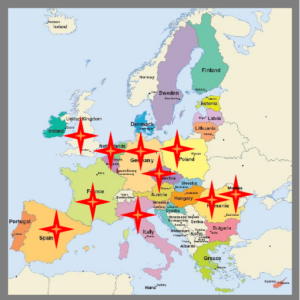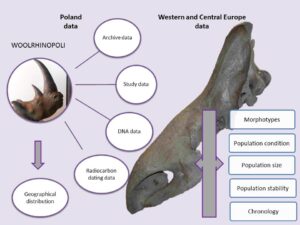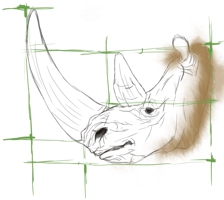About Project
 The woolly rhinoceros (Coelodonta antiquitatis Blumenbach 1799) and the woolly mammoth are main representatives of the Pleistocene megafauna. There is a surprising dearth of research on the woolly rhinoceros in Poland given the relative abundance of its remains. We have thus no knowledge of the details of the woolly rhinoceros’ presence; in particular, we do not know in geographical terms how widely it was distributed across Poland. We do not know either if its presence was permanent, temporary, or periodic. Further, none of the studies conducted so far have addressed the ancient DNA, which could shed light on ancient populations.
The woolly rhinoceros (Coelodonta antiquitatis Blumenbach 1799) and the woolly mammoth are main representatives of the Pleistocene megafauna. There is a surprising dearth of research on the woolly rhinoceros in Poland given the relative abundance of its remains. We have thus no knowledge of the details of the woolly rhinoceros’ presence; in particular, we do not know in geographical terms how widely it was distributed across Poland. We do not know either if its presence was permanent, temporary, or periodic. Further, none of the studies conducted so far have addressed the ancient DNA, which could shed light on ancient populations.
 In an ongoing (2022–2026) project, entitled “Unraveling the chronological, geographical, and taphonomic complexities of the occurrence of the woolly rhinoceros in the Pleistocene contexts of Poland (WOOLRHINOPOLI) and Europe” we will strive to unravel these questions by examining the remains of the woolly rhinoceros from Poland, the North Sea, and selected European countries (Germany and the Czech Republic: Ivo Verheijen; the Netherlands: Thijs van Kolfschoten; the United Kingdom: Adrian Lister and Tony Stewart; France: Manon Hullot; Spain: Diego Jaime Alvarez Lao; Italy: Luca Pandolfi; Romania: Vlad Codrea; Moldova: Roman Croitor; Poland: Kamilla Pawłowska, Paweł Mackiewicz; Beringia: Andrey Puzachenko).
In an ongoing (2022–2026) project, entitled “Unraveling the chronological, geographical, and taphonomic complexities of the occurrence of the woolly rhinoceros in the Pleistocene contexts of Poland (WOOLRHINOPOLI) and Europe” we will strive to unravel these questions by examining the remains of the woolly rhinoceros from Poland, the North Sea, and selected European countries (Germany and the Czech Republic: Ivo Verheijen; the Netherlands: Thijs van Kolfschoten; the United Kingdom: Adrian Lister and Tony Stewart; France: Manon Hullot; Spain: Diego Jaime Alvarez Lao; Italy: Luca Pandolfi; Romania: Vlad Codrea; Moldova: Roman Croitor; Poland: Kamilla Pawłowska, Paweł Mackiewicz; Beringia: Andrey Puzachenko).
 For this purpose, we plan to collect archive data and to scan the entire territory of Poland in search of sites with remains. Studies have been designed for taxonomic determination of remains, age and sex determination, measurements of bones and skulls, determination of pathological changes in relation to past diseases or injuries, determination of absolute age of remains by radiocarbon dating, and DNA analysis.
For this purpose, we plan to collect archive data and to scan the entire territory of Poland in search of sites with remains. Studies have been designed for taxonomic determination of remains, age and sex determination, measurements of bones and skulls, determination of pathological changes in relation to past diseases or injuries, determination of absolute age of remains by radiocarbon dating, and DNA analysis.
Project carried out in consortium with the Center of New Technologies, University of Warsaw (CeNT UW: Danijela Popović).


